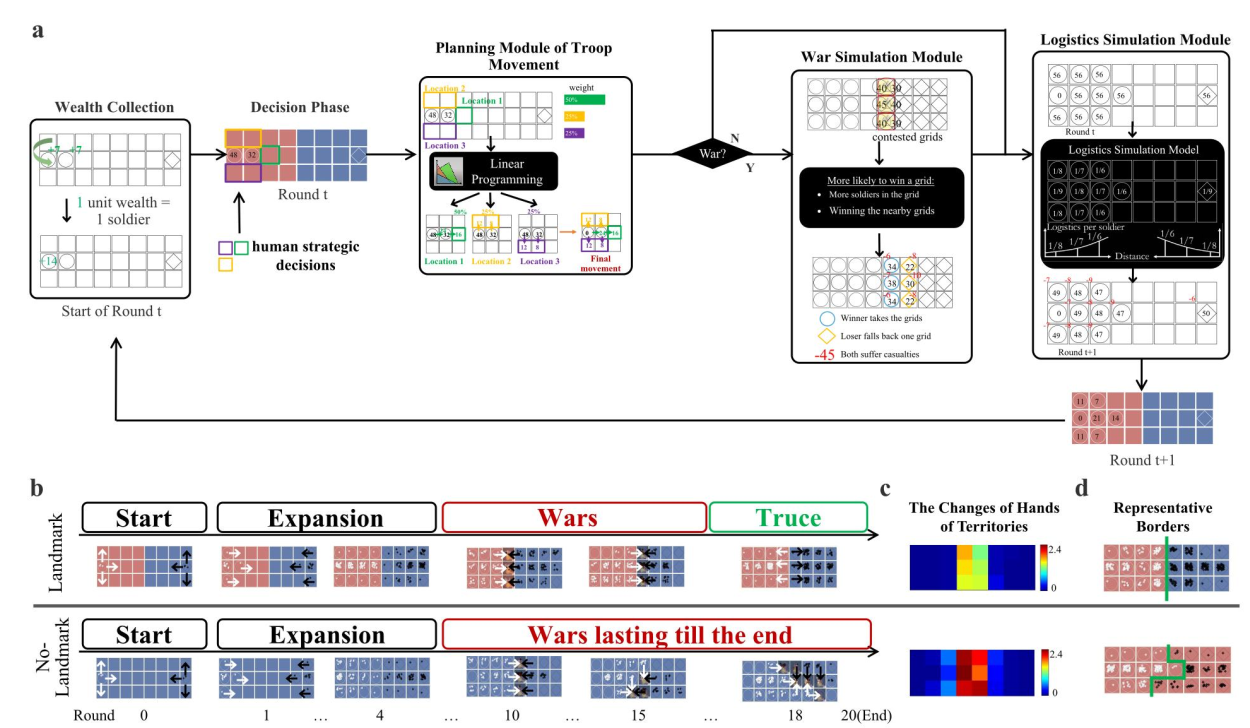Territorial Gestalt in the Strategy of Conflicts

Abstract
Human social interactions often involve both cooperation and competition. While coordination in cooperative settings has been well studied, less is known about how individuals resolve severe, protracted conflicts. In this study, we introduced a long-horizon territorial conflict game where participants competed for space on a two-dimensional board. Despite repeated interactions, conflict intensity did not subside over time—contrary to findings in simpler, one-shot matrix games. However, when a payoff-irrelevant color boundary was introduced, participants used this salient perceptual cue as a focal point for dividing the territory. The presence of this “territorial Gestalt” shifted strategies toward defensive postures, reduced the frequency of direct battles, and enabled opponents to settle conflicts precisely along the perceptual boundary. These findings extend focal point theory by demonstrating that humans naturally import external, payoff-irrelevant concepts into conflict situations to achieve coordinated outcomes. Our results highlight the importance of perception-based territorial Gestalt in fostering cooperative resolutions to otherwise intense and enduring disputes.
Demo1
Landmark condition in Experiment 1, showing that players enjoyed a long period of peace and settled along the perceptual border
Demo2
No-Landmark condition in Experiment 1, showing that a player (white) attacked his opponent in different orientations, resulting in longer and irregular borders.
Demo3
No-Landmark condition in Experiment 2, showing an instance of annihilation.
Demo4
Vertical condition in Experiment 2, showing how players deployed their troops vertically.
Demo5
Horizontal condition in Experiment 2, showing how players deployed their troops horizontally.
Demo6
No-Landmark condition in Experiment 2, showing the chaotic wars with different degrees.